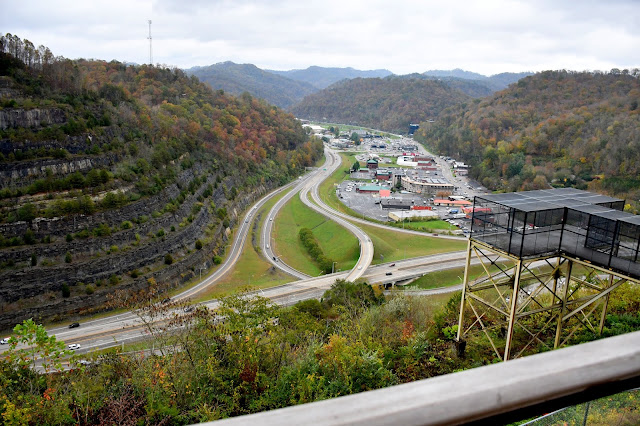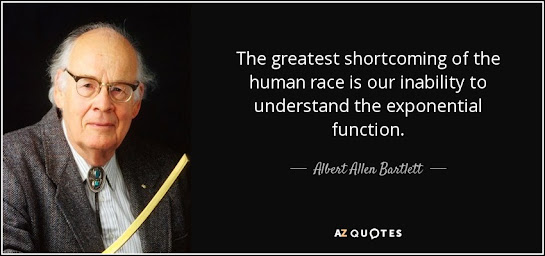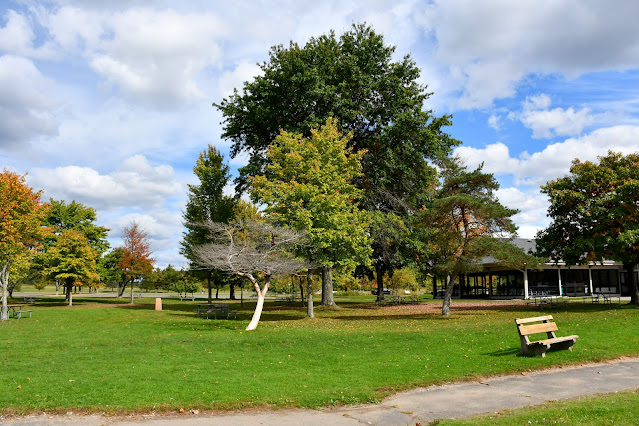Can We Save Species From Extinction?
With as much focus on extinction now that most of society realizes that this is AT LEAST a possibility, many people have come up with the idea of moving different species around the planet in order to insure that they will survive into the future. Some species have been brought to zoos or other places to help them reproduce and raise offspring to add to the number of those species living today. There are a number of seed banks designed exclusively with saving specific genetics, breeds, and types of plants from being lost to extinction. But is it a good idea for us to interfere with nature, with wild animals who can become habituated to humans, and can we actually "save" other species from extinction or some other awful destiny, the overall reason we are constantly interfering with nature in the first place in this matter?
I hate to say it, as this is a repeating theme on my blog, but do we really have agency? Of course, this is too easy of an answer, and one that leaves out specific details. There are actually a rather large number of organizations involved in many different conservation efforts, some are precisely in existence in an effort to prevent the extinction of different species. Unfortunately, our meddling often actually makes situations worse rather than better over the long haul. Why does this happen?
The one thing that humans all have in common is our aspirations, hope, and desire to "make things right" and to help others. We often build castles in the sky, unfortunately (interesting how this video displays electronic architecture). This is due to denial of reality. While many of these organizations tout many so-called "success" stories, the trouble with every single one of them is that they are entirely dependent upon TODAY'S conditions and infrastructural platforms. How do we transport large animals, such as elephants, around the world today? Well, of course, we use fossil fuels to do the heavy lifting just like any other heavy duty job today (such as mining, road and bridge and tunnel building, manufacturing cars of all stripes, etc.). How will we transport elephants in the future away from the threat of extinction? The answer is that we won't. We don't have agency. Fossil fuels are now in terminal decline as I point out in this entry. Part of my article Denial of Reality goes into specific details relevant to this article and adds to the evidence for us being unable to save species from extinction, quote:
"Many people think that climate change can be "fixed" (as in stopped) or reversed, but current science shows that climate change is irreversible on human timescales. Another article shows that this is due to ocean heat uptake (OHU). Another recent study indicates that climate change is irreversible due to permafrost thaw. Still yet another study demonstrates climate change being irreversible due to oceanic oxygen depletion. Even if emissions are reduced, the reduced AME (Aerosol Masking Effect; aka global dimming) as a result will continue warming for a considerably long time before the climate begins to cool; and this depends upon self-reinforcing feedback loops remaining at current levels rather than increasing natural emissions releases. However, climate change in and of itself isn't the worst part of the overall set of predicaments. It is how climate change and ecological overshoot, its parent predicament, affect the rest of the biosphere and how life on this planet responds to those effects. If all we had to do was adapt to temperatures 2, 3, or 4 degrees Celsius more than today, we could probably accomplish such a task. However, not all plants and animals can say the same, and unfortunately, we depend on far more than just those plants and animals for our own existence; we also depend upon the ecosystem services which they provide. These two articles here and here explain the scenario, but fail to point out that we are actually in at least the 8th mass extinction event (here and here). in addition, it is also important to point out that evolution cannot keep up with the rate of change. We simply cannot evolve fast enough."
So, in the end, these stories of success in reality are limited - they're only for today. We will not be able to transport large animals in the future safely like we can today, and likewise, we won't have the same capabilities in many more arenas. Furthermore, all large animals such as ourselves are destined for extinction as I point out here and here. Obviously, once our numbers are small enough, we won't have the capacity to scatter seeds from a seed bank and conditions won't stay the way they are anyway, rendering such seed storage somewhat pointless. Now, those articles go into much more detail but still leave out a few items that I want to cover here, which is why I decided to sit down and write this particular article.
Before I proceed further, ask yourself a question: Do we have the ability to provide a species with habitat? The answer is NO. We can extract energy and resources to build short-term habitat, but we have no ability or agency to provide habitat over the long term, and once the fossil fuel platform can no longer reliably provide the energy to extract the resources necessary for providing this artificial habitat, we will be unable to maintain said habitat. See also this article. Nature is ultimately in charge here, not us. Since we cannot guarantee habitat, the assisted migration and translocation of species mentioned below is pure folly because we cannot save those species from extinction due to an inability to provide long term habitat.
Expanding on the same idea, I point out the common mistake many people make thinking that society and all the conditions surrounding us will remain the same here, quote:
"Perhaps the most damning about all his ideas are that they are based upon the false assumption that society will be anything like it is today. This is dangerous because we are in collapse. Everything we currently take for granted is going to change, so these ideas aren't taking into consideration the dynamics of the collapse we are already in, no differently than his not taking the current mass extinction we're in into proper consideration (the very ecosystem services currently provided by the biodiversity which is being erased as this is being read means that one must not make the assumption that what is possible today will also be possible tomorrow. This seems to be a common myth that many people don't take into consideration, and one Nate should know better about."Before delving further into yet more proof as to why we can not save species from extinction, my article on The Grand Illusion demonstrates an expanded view on our lack of agency and the illusion of free will which I posted above (Agency - Do We Have Free Will?).
One item in particular which I wanted to discuss is the existence of an organization devoted to moving redwood trees to new areas in order to survive future warming, drought, wildfire, and other extreme weather events in California. The organization does far more than just planting trees, but my points have to do with moving species (translocation) into new areas they did not evolve in. As can easily be seen here, moving mature trees is possible today only with the help of fossil fuels. Obviously, moving mature trees would be a waste of resources, so sequoia and redwood trees are being planted further north in an effort to save the species. This is truly a very noble idea, but one ultimately and sadly infected with human hubris. The unfortunate truth is that habitat is required for ANY species to exist. When habitat is removed, species go extinct. Evidence of palm trees (which in reality are not trees) in Alaska from previous geological eras should be evidence sufficient to expose the foolhardiness of these ideas. But of course, false beliefs, denial of reality, and optimism bias explain the pervasiveness of ideas just like this across the spectrum of society.
While some translocations may be met initially with success, this isn't always the case and many of these success stories sound great but aren't very realistic in anything more than the short term.
"Moving endangered species to new locations is often used as part of species conservation strategies, and can help to restore degraded ecosystems. But scientists say there is a high risk that these relocations are accidentally spreading diseases and parasites.
The new report published today in the journal Conservation Letters focuses on freshwater mussels, which the researchers have studied extensively, but is applicable to all species moved around for conservation purposes."
Furthermore, it goes on to explain that this can actually cause collapse of an entire population, quote:
He added: "We've seen that mixing different populations of mussels can allow widespread transmission of gonad-eating worms—it only takes one infected mussel to spread this parasite, which in extreme cases can lead to collapse of an entire population."
Pathogens can easily be transferred between locations when mussels are moved. In extreme cases, the pathogens may cause a population of mussels to completely collapse. In other cases infections may not cause a problem unless they are present when other factors, such as lack of food or high temperatures, put a population under stress leading to a sudden outbreak."
"However, male fertility at high temperatures—rather than the temperature at which they stopped moving or died—was the best predictor of the likelihood of warming extinction. Importantly, they showed that the temperature at which males could no longer reproduce was much lower than temperatures that killed them.
"The way we currently estimate climate change vulnerability may be underestimating extinction vulnerability," Dr. van Heerwaarden said.
"We need to consider fertility if we want to understand the impacts of climate change on biodiversity," she said.
"Species that we thought could tolerate 7 °C of warming may already be experiencing temperatures that are within 1 °C of their male upper reproductive limit. If males are unable to fertilize females, populations will crash and be unable to replace themselves."
However, far more predicaments caused by these rising temperatures are more likely to be the undoing of many species by the unraveling of the ecosystems which support those species or disease caused by said unraveling.
The study was published in Biological Reviews, and conducted by biologists from the University of Hawaii and the Museum National d’Histoire Naturelle in Paris. While researchers say that conservation initiatives have been put in place to combat the crisis and protect certain species, the study suggests that the damage has already been done.
“These initiatives cannot target all species, and they cannot reverse the overall trend of species extinction,” reads a press release that accompanied the study."












Anyone citing Kansas's Dust in the Wind has gotta be cool. Nice one!
ReplyDeleteI haven't commented on your recent articles, but they are totally in line with my thinking and awareness.
I will always refer to William Catton's book Overshoot, written in 1980, which could have been written yesterday. Collapse and extinctions are a normal process, all species go throw growth-overshoot-collapse in varying degrees all of the time. This is a normal part of evolutionary biology.
Who are we as a species as to be so arrogant to deny, or even worse, to try to alter, that process?
Thanks, Sultanbev. Music tends to communicate messages far better to most people than scientific studies, so I figured I might as well throw some excellent tunes into the mix.
DeleteEvolution will sort things out. We should just stop interfering and let it do it's job.
ReplyDeleteThanks, Bev. It sure would be nice if we would stop interfering; there are reasons for these things that we don't always understand (yet).
Delete